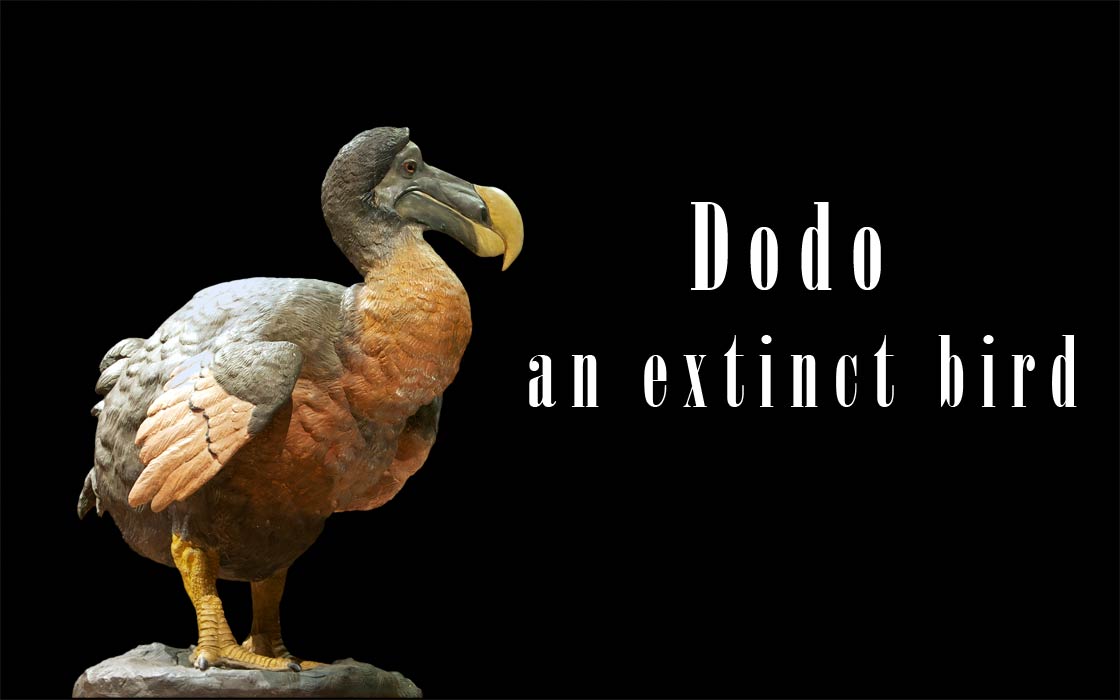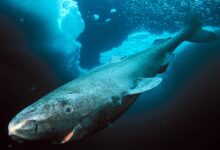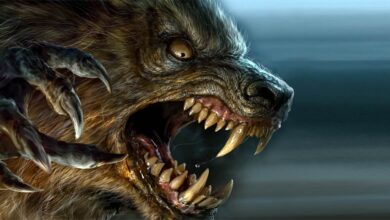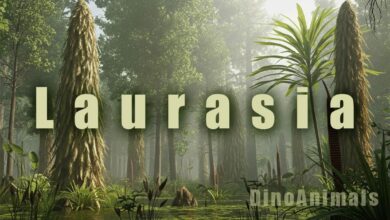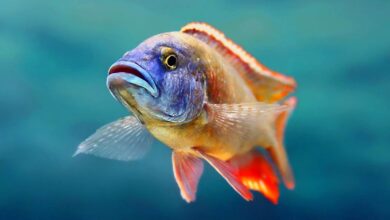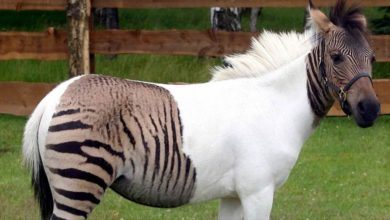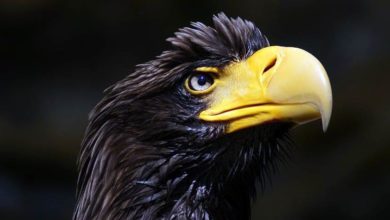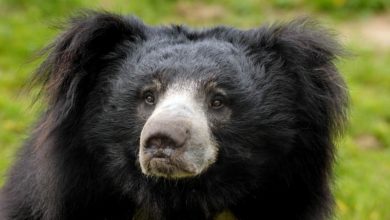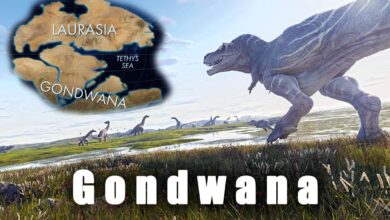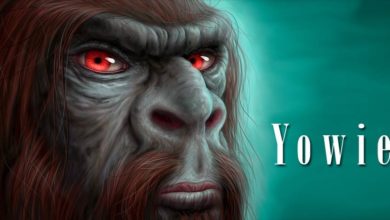Dodo (Raphus cucullatus)
Dodo (Raphus cucullatus)
The Dodo is a prime example of an animal that became extinct due to human activity. It has become a symbol of the destructive power that we have, and which, unfortunately, we willingly use. The once paradise island of Mauritius, almost completely covered with forests, has been transformed into a civilized place, turning into an enemy of numerous endemic species there.
Dodo is a mysterious bird in terms of behavior, but well known in terms of appearance, thanks to numerous illustrations and historical sources. Let us try to systematize the knowledge about this large extinct flightless bird and try to recreate how it could live and treat its surroundings.
Classification
- Kingdom: Animalia
- Phylum: Chordata
- Class: Aves
- Order: Columbiformes
- Family: Columbidae
- Subfamily: †Raphinae
- Genus: †Raphus
- Species: † Raphus cucullatus

Occurrence
The Dodo was endemic to the island of Mauritius, located in the Indian Ocean east of Madagascar. However, little is known about his preferred habitats. It is believed that he stayed in the forests of the dry coastal areas to the south and west of Mauritius.
Assuming this to be true, the limited range of the dodo would be one reason for the species’ extinction. However, the remains of these birds were also found in mountainous areas, suggesting that the dodo covered a wider area. Studies in the Mare aux Songes swamps (Fossillagerstätte – ‘fossil storage’) also showed that the dodo habitat was dominated by the endemic tree species Sideroxylon grandiflorum and screw palms (Pandanus).
Dodo lived on Earth from about 10 million years ago to 300 years ago. It was discovered in 1598 during the second Dutch expedition to Indonesia. It died out very quickly, only about 70 years after the arrival of Europeans to Mauritius.
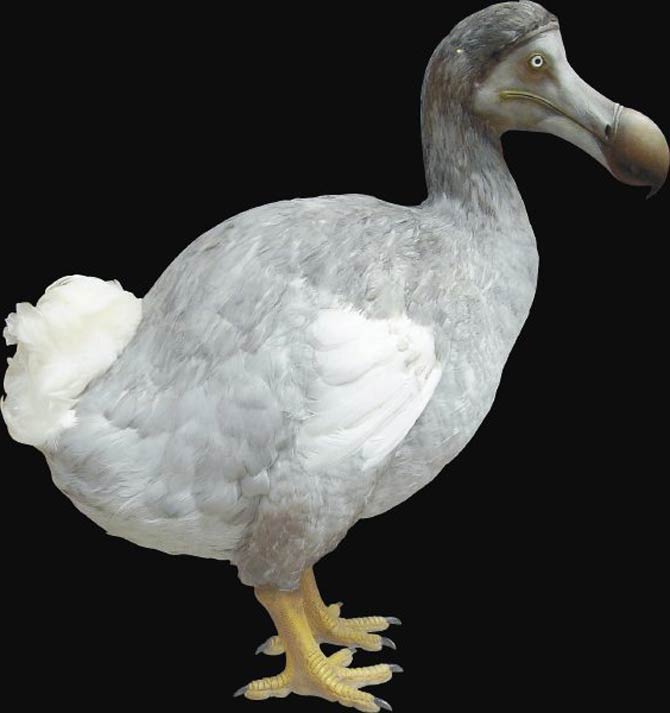
Characteristic
Appearance
As a complete dodo skeleton has not yet been found, its plumage and exterior are somewhat of a mystery. Drawings and accounts created during the dodo era are the basis on which the reconstructions of this bird are based. Thus, following old sources, the dodo had brown or grayish plumage. Their structure resembled the feathers of pigeons. A tuft of curly feathers grew on the rump, forming what looked like a plume. The head was large, gray and naked, with a downward-curved beak in black, green and yellow. Thick legs had a yellow tint, ended with black claws.
There was sexual dimorphism within the species – males were larger, and their beaks were also proportionally larger.
Based on the discovered remains, it was shown that the dodo was a large bird. It could reach up to 1 m in height and weigh about 23 kg, although this weight applies rather to individuals living in captivity. Free birds probably reached 10-21 kg. However, it is believed that the weight of the dodo changed with the seasons – in the coldest months it stored subcutaneous fat, which decreased significantly in the summer.
Unlike his closest relatives – the pigeons – the Dodo could not fly. This is indicated by the wide bones of the pelvis and a small, poorly developed sternum.
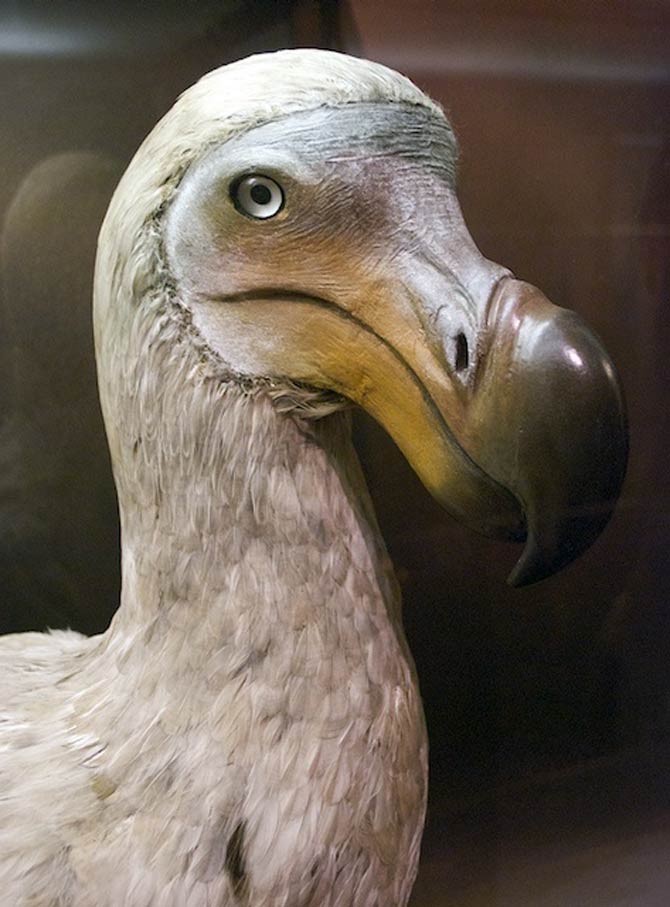
Diet
From a Dutch document from 1631, we learn that the dodo fed on fruits, seeds, nuts, tubers, and roots. Some materials say, however, that this bird also ate clams and crabs, similar to modern crowned pigeons. This would mean that the dodo was an omnivore.
He probably stored up body fat at the end of the rainy season, gorging on ripe fruit. In this way, he was able to survive the difficult dry season, during which food was scarce. This big glutton was able to help himself with digestion with the help of stones that he swallowed. They rubbed food in the stomach, facilitating the entire digestive process.
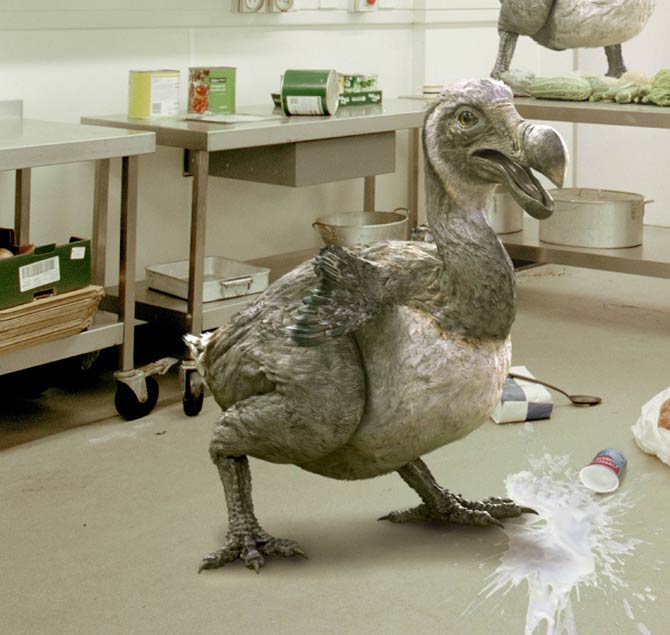
Lifestyle
Not much is known about the dodo disposition because the sources describing its lifestyle are scarce. However, several theories have emerged about this.
Strong leg bones indicate that he could move very quickly. Multiple bone fractures in the wing area may indicate that the dodo used them for intraspecific combat. However, there is no evidence for this. Weak pectoral muscles and sharply reduced wings suggest that the dodo was hardly able to defend himself this way.
It is possible that he used his large, curved beak to fight (mainly for territories). However, taking into account the resources of the island and its climate, one can risk a statement that the dodo had no reason to develop aggressive behavior and a strong territorial instinct. Probably the Rodrigues solitaire (Pezophaps solitaria) – an extinct relative of the Rodrigues dodo – was more aggressive than its cousin in Mauritius.
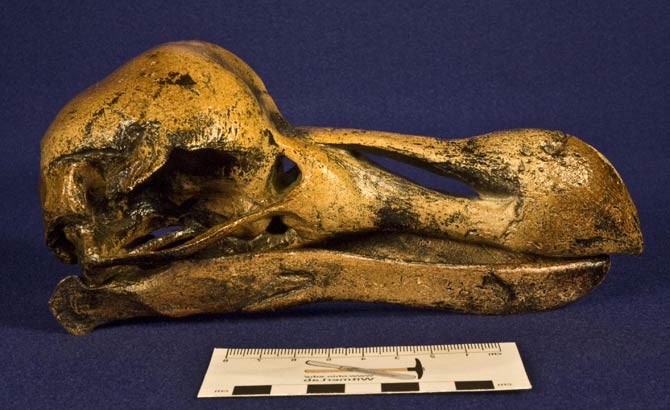
Reproduction
For centuries, Mauritius has been devoid of predatory mammals and other animals that could endanger the flightless dodo and other endemics. Consequently, the dodo could build nests on the ground without fear of attacks by any attacker.
Due to its size, the dodo could only lay 1 egg during the breeding season. This may indicate that the dodo used the so-called life strategy K. This means that the dodo in its ecosystem showed a low fertility rate, which prevented the species from depleting resources. As part of the K dodo strategy, he was also able to look after his offspring for a very long time. In this way, the young learned the methods of survival better, which in turn was associated with the low mortality of the chicks. The large size and the fact that tropical birds have a slower growth rate indicate that the dodo may have taken many years to mature. However, these are only hypotheses.
It is also unknown how the dodo chicks ate. If they were very similar to pigeons in this respect, they could have been fed the so-called marshmallow – discharge from the initial sections of the digestive tract.
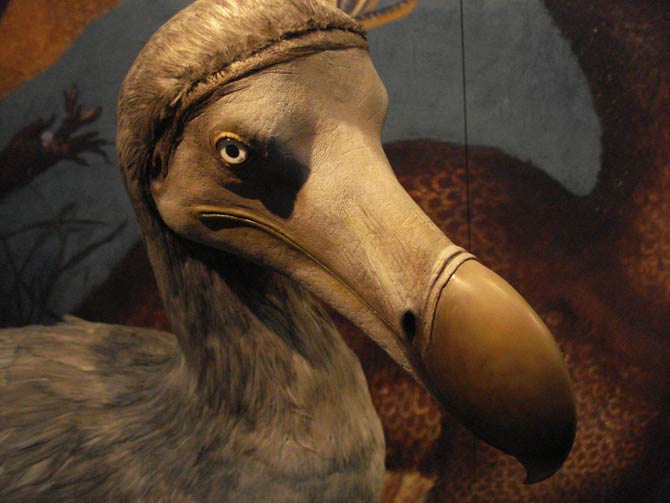
Extinction
The dodo is not unique to other extinct species that have evolved in complete isolation from predators. If an animal has never experienced an attack from another animal, it is not afraid of strangers. It was the lack of fear towards humans and the inability to fly that made this bird an easy prey for sailors.
However, the human population in Mauritius in the 17th century never exceeded 50. So Homo sapiens would not be able to kill the dodo by itself. Probably many birds were killed by mammals brought to the island: dogs, cats, pigs, rats, and also crab-eating macaque (Macaca fascicularis), which ate the dodo eggs and competed with it for food. At the same time, people began deforestation of the island, the most important habitats for the dodo. It is believed that the more important cause of the extinction of the species was not hunting, but the introduced populations of these mammals, mainly macaques and pigs.
It cannot be ruled out that even before man’s arrival in Mauritius, the dodo was a rare bird. If it occupied virtually the entire territory of the island, its extinction would not have happened so quickly. Additionally, in 2005 the remains of the dodo and other animals killed by the flood were discovered. Certainly, a natural disaster that killed many birds at once could have contributed to a significant reduction in the population.
There is also uncertainty about the extinction date of the dodo. It is commonly believed that the last living specimen was seen in 1662 by Dutch sailors from the ship Arnhem. They described birds that were hunted on a small island near Mauritius. Today it is believed that it is Amber Island, located east of Mauritius.
Although reports of the existence of this bird date back to 1664-1674, they are today considered unreliable. Therefore, the most probable date of extinction of the dodo was 1662. Certainly, this bird died out before the 18th century. It was discovered in 1598, the Dutch left the island in 1710, but by then the dodo and other large terrestrial vertebrates from Mauritius were extinct.
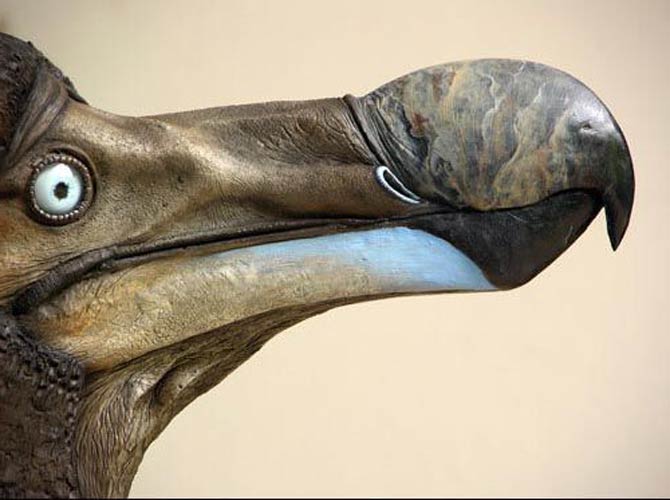
Detailed data / dimensions (size)
Dodo (Raphus cucullatus)
- Body height: 90-100 cm (2.95 – 3.28 ft)
- Weight: 10-21 kg (22 – 46 lb)
- captive individuals could weigh over 20 kg (44 lb)
- Beak length: up to 23 cm (9 in)
- Extinct: approx. 300 years ago (AD 1662)
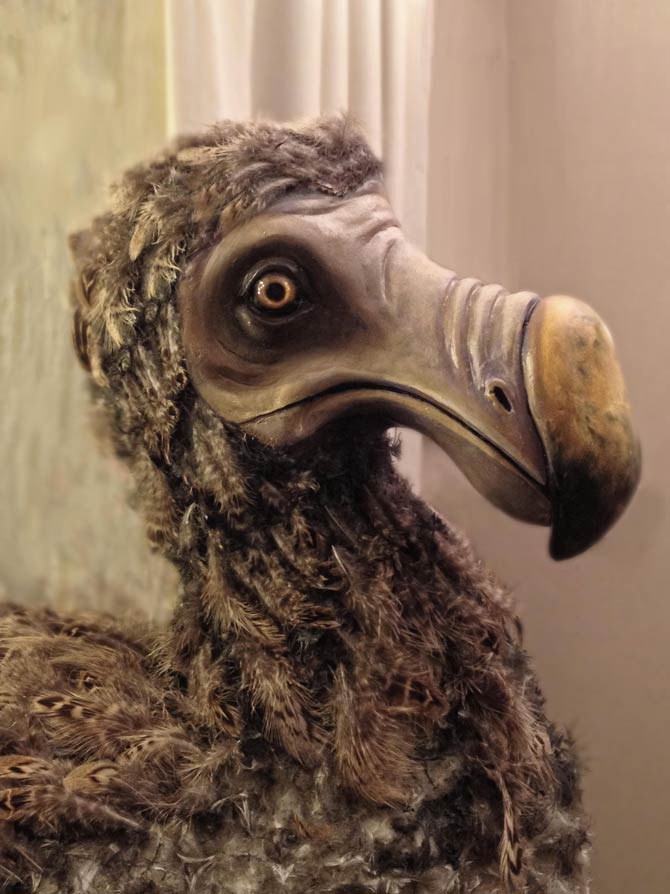
Dodo – interesting facts
- The origin of the word “dodo” is not entirely clear. Some linguists have suggested that it is derived from the Dutch “dodoor”, meaning “sluggard/clyde”. However, it is possible that the word “dodo” was derived from dodaars, which translates as “thick croup”, “fat-arse”, “knot-arse” or “knotted croup”, which refers to a tuft of feathers on the back of the dodo.
- The word “dodo” could also be used to describe the extinct Réunion sacred ibis (Threskiornis solitarius).
- The only surviving dodo remains in Europe is the dried head and foot from the 17th century. They are located in the University of Oxford’s Natural History Museum.
- The closest living relative of the dodo is the Nicobar pigeon (Caloenas nicobarica).
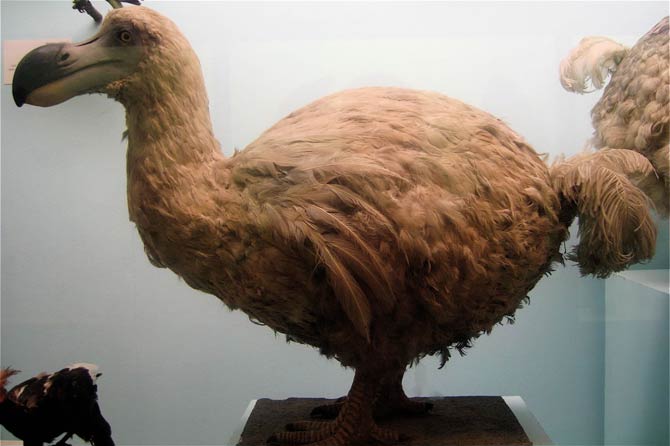
Recommended
- Mass extinctions of species – the „Big Five”
- History of animals and plants extinction
- Extinction of dinosaurs. Why are they extinct?
- The longest dinosaurs. Sauropods Top 10
- The heaviest dinosaurs – Top 10
- The longest predatory dinosaurs. Theropods Top 10
- The heaviest predatory dinosaurs Top 10
- The longest Ornithischians (Ornithischia) TOP 10
- The heaviest Ornithischians Top 10
- The largest raptors (dromaeosaurs) Top 10
- The heaviest Dromaeosaurids / dromaeosaurs – Top 10
- The longest Ankylosaurus Top 10
- The heaviest Ankylosaurus Top 10
- The longest ceratopsians
- The heaviest ceratopsians
- The longest and largest ornithopods
- The heaviest ornithopods Top 10
- The longest Stegosaurians (Stegosauria) TOP 10
- The heaviest Stegosaurians (Stegosauria) Top 10
- The smallest sauropods Top 10
- The smallest dinosaurs Top 10
- The largest pterosaurs Top 10
- Dinosaurs
- Dinosaurs database
- Predatory dinosaurs
- Animals & dinosaurs records
- The fastest animals – Top 100
- The fastest birds – Top 10

